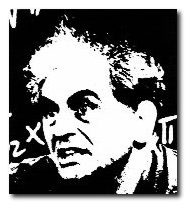

During World War II he worked as a civilian physicist for the US Army Signal Corps while holding fellowships in physics at the universities of Idaho and Oklahoma. Īfter submitting over 700 job applications, he was offered a place in 1937 in the Physics Department of Dillard University, a private, African American liberal arts college in New Orleans. They had no children, but he was to reach millions of children through his popular science programs. He married the doctor's maid, Alice Brown. Due to the Great Depression, he worked as a butler for a wealthy Boston doctor for the next two years. Miller graduated with a Master's degree in physics from Boston University in 1933. His father was Latvian, and his Lithuanian mother spoke 12 languages. Julius Sumner Miller was born in Billerica, Massachusetts, as the youngest of nine children. He is best known for his work on children's television programs in North America and Australia. No wonder his teacher, Yip Man, in that quasi-bemused yet knowing way of my cultural relatives dubbed Master Choy “The King” of Siu Nim Tao.Julius Sumner Miller (May 17, 1909 – April 14, 1987) was an United States physicist and television personality. And his investigations and innovations in Siu Nim Tao as a tool to unlock more of the physical and psychological potential in each of us are generous and deep.

The point is: Master Choy seems to be one of those rare, truly decent people. But still I tend not to involve myself with such people – it just never really seems to work out for me.

The practical answer is, of course, “Yes”. It’s bit of a Philosophy 101 poser: Can something truly good come from someone deeply or just moderately flawed? Better to wait until a decent person comes along with something good than to use or follow the “useful” works of someone disreputable, even someone merely annoyingly egocentric. Horse’s rear ends should be avoided if at all possible. Heck, we tend to overlook extreme deficiencies if we think the person’s efforts could be of some benefit to us.Īs one who seems destined to follow the Old Ideals, I tend follow a different tack. Particularly, if the work is of some benefit to others, we tend to overlook personal deficiencies. I realize in the West – (and East, for that matter) – we tend to separate a person from their work. Master Choy is gone now but his legacy lives on – through his students, through his writings (mostly still in Cantonese), and videos such as these.

There’s something about a man of such ability and generosity of character that bears inspection. “He looks more like a Chinese painting or calligraphy teacher,” she says. His genial demeanor, his slight frame…he seems more professor than pugilist. Most impressive of all, as one of his students said, is that Master Choy doesn’t come across as any kind of martial science master. Diligent practise is required – but it is a start. Then, at the 7:00 min mark, Master Choy gives a demonstration of the movements of the Siu Nim Tao (Cantonese for “Little Idea”) form he believes are key to a simple yet effective way of cultivating the Nim Tao mental state – or frame of mind, if you will – from which a person can activate Nim Lik. In fact, it was this demonstration that led me to think: “What’s all this then? What’s going on here?” This is particularly true when Master Choy takes an absolute novice and trains him to redirect downward the energy of someone pushing him laterally. Julius Sumner Miller on the old Mickey Mouse Club than a martial arts scenario. Wizard aka Don Herbert or a comparable one by Prof. For those of us of a certain age, it is more like a science demonstration by Mr. Of interest to me – someone who is not even a Wing Chun practitioner – is how Master Chu (or Choy, in my more traditional brand of Cantonese) freely demonstrates the manifestation of Nim Lik (“power generated from thinking”).
MICKEY MOUSE CLUB JULIUS SUMNER MILLER SERIES
It is presented by the Wing Chun adept Sergio Iadarola, who has a series of very interesting interviews of key figures in Wing Chun on YouTube. Here is a short interview of Master Chu Shong Tin.


 0 kommentar(er)
0 kommentar(er)
